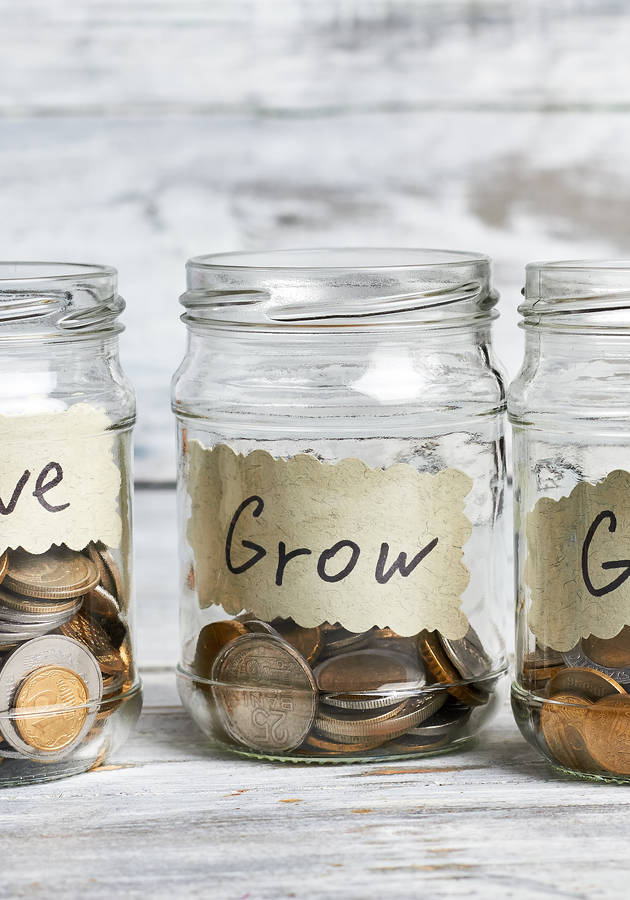“Happiness is the meaning and the purpose of life, the whole aim and end of human existence,” wrote, 2.5 millennia ago, the most versatile thinker of ancient times, Aristotle. Tenzin Gyatso – much better known as the 14th Dalai Lama – wholeheartedly agrees. “I believe that the very purpose of our life is to seek happiness,” he told once psychiatrist Howard C. Cutler, whose private meetings and discussions with the Dalai Lama form the basis of “The Art of Happiness.”
But is happiness a reasonable goal for most people? Is it really attainable or even possible? The Dalai Lama is unhesitant: “Yes,” he claims. “I believe that happiness can be achieved through training the mind.” Well, get ready to discover precisely what that means!
Happiness isn’t determined by external events
Let us start our exploration of the meaning and nature of happiness with two real-life stories.
The protagonist of the first story is a 32-year-old nurse who quits her job to go work with two friends at a healthcare startup. Just 18 months later, the company is acquired by a large conglomerate for a huge sum, making the woman a millionaire overnight. She retires immediately, overjoyed at the astonishing opportunity and the unexpected windfall. However, when asked about her happiness levels not long after these events, she says something quite extraordinary: “It’s strange; after I got over all the excitement of making all that money, things kinda returned to normal. I mean things are different – I bought a new house and stuff – but overall I don’t think I’m much happier than I was before.”
The second story concerns a 30-something man who finds out, in the midst of the AIDS epidemic, that he is HIV-positive. He is devastated at first, but a year later, he comes to terms with his fate. From that moment onward, things take an unexpected upward trend. “I feel happier than I ever have,” he tells Cutler, a friend of his. “I just seem to appreciate everyday things more. I have to admit that in some ways the disease has transformed my life… in positive ways.”
What these stories illustrate is the counterintuitive notion that “happiness is determined more by one’s state of mind than by external events.” People tend to mix happiness with things such as pleasure or success, but the difference between them is immense – for only happiness is lasting. As numerous psychological studies have shown, winning the lottery or being diagnosed with a deadly disease affects our overall happiness levels considerably – but only for a very brief period of time. Then, most people get back to their baseline level of happiness – which has little to do with what actually happens to us and more to do with what we expect to happen, and how we process what has already happened.
“Our moment-to-moment happiness is largely determined by our outlook,” writes Cutler. “In fact, whether we are feeling happy or unhappy at any given moment often has very little to do with our absolute conditions but, rather it is a function of how we perceive our situation, how satisfied we are with what we have.”
Happiness is relative (but that makes mind-training possible)
In a word, the prime factor in achieving happiness is our mental state and the main tool to achieve happiness is our mind. The main problem in this equation is that evolution has designed our minds to be constantly preoccupied with comparisons. For millions of years, the logic was sound: it wasn’t smart to feel content in a world of violence and saber-toothed cats; it was much smarter to compare yourself with others and try to model your behavior on those who were better and more fortunate than you. That granted our ancestors the best chances for survival.
The world today is much safer and much more just. We’ve managed to build societies capable of meeting the basic needs of most people. Unfortunately, this ancient mechanism of comparison still works at the back of our mind, strongly influencing our feelings of contentment and levels of happiness. “Constant comparison with those who are smarter, more beautiful, or more successful than ourselves […] tends to breed envy, frustration, and unhappiness,” writes Cutler. “But we can use this same principle in a positive way; we can increase our feeling of life satisfaction by comparing ourselves to those who are less fortunate than us and by reflecting on all the things we have.”
In other words, if happiness results from comparison, then simply by adjusting our standards of comparison – which are, after all, arbitrary constructs – we can raise our levels of happiness. For example, no matter how bad your day has been, just taking into consideration the fact that being able to read this makes you more fortunate than half of the world’s population – which has no access to the internet – should grant a temporary sigh of relief. Do this more often, and you’ll train yourself to not despair over not owning the newest Samsung Galaxy – no matter how many of your friends have bought it.
This is what the Dalai Lama thinks when he says that happiness can be achieved through mind-training. But this is still only a small part of it. Because, in the dictionary of the enlightened, “mind” always means something more than one’s cognitive ability or intellect. “I’m using the term in the sense of the Tibetan word ‘Sem,’” the Dalai Lama explains, “which has a much broader meaning, closer to ’psyche’ or ‘spirit’ – it includes intellect and feeling, heart and mind. By bringing about a certain inner discipline, we can undergo a transformation of our attitude, our entire outlook and approach to living.”
The inner discipline and the power of compassion
Training yourself for happiness is neither an easy nor a short procedure. On the contrary, it is a lifelong program that starts with two obvious steps: identifying the factors that lead to contentment and those that lead to suffering, and then setting about to eliminate the latter and cultivate the former. The final objective is achieving “a calm state of mind” – one that can’t be easily ruffled by external circumstances, whether positive or negative.
“As long as there is a lack of the inner discipline that brings calmness of mind, no matter what external facilities or conditions you have, they will never give you the feeling of joy and happiness that you are seeking,” says the Dalai Lama. “On the other hand, if you possess this inner quality, a calmness of mind, a degree of stability within, then even if you lack various external facilities that you would normally consider necessary for happiness, it is still possible to live a happy and joyful life.”
However, contrary to what some Hollywood movies would have you believe, “a calm state of mind” is not the same as an “apathetic, self-serving state of mind.” The peace of mind the Dalai Lama speaks of is rooted in affection and compassion, brimming with feelings and high levels of sensitivity and kindness. This is not just because caring for the happiness of others is ethically more justifiable than merely caring for your own happiness; it’s also because the two are interconnected. The Dalai Lama makes this connection clear in one of the most memorable aphorisms of the book: “If you want others to be happy, practice compassion. If you want to be happy, practice compassion.”
Practicing compassion starts with willfully and actively putting yourself in the shoes of others and seeing the world from their perspective. This action alone is enough to hack the evolution-backed, comparison-based self-interests of our biological minds. We are naturally programmed to put ourselves first, so our mind instinctively edits out every information that might not be beneficial to us. By forcing ourselves to understand the position of the other – instead of merely bursting into anger and fury with them – we use our intellect and feelings to fill those empty parts with meaningful information. Only then the basic fact of coexistence can become obvious to us: we are not the only ones with problems; other people have them too and, just like us, they need empathy instead of indifference, and listeners instead of admonishers.
Therefore – to paraphrase a famous philosophical razor – never attribute to malice that which can be adequately explained by misunderstandings, lethargy and other less criminal motives. These are far more frequent.
The value and benefits of true love
According to the Dalai Lama, just like compassion, love is not a luxury, but a necessity. Without both, neither humanity nor any human on this planet would be able to survive – let alone attain happiness.
Unfortunately – and especially in the West – we’ve all but forgotten what love is. Absorbed in our efforts to reach radical independence from everybody, we’ve grown accustomed to thinking of “dependency” as a bad word. At the same time, the eternal children in us yearn for intimacy and connectedness. The result of these opposing forces is the Western concept of love, which can be more suitably labeled as “romantic love” and more properly described as a subcategory of a sublime mental state that encompasses everything.
Fooled by books and movies, most Westerners nowadays focus all their energy on finding “the one” – convinced that, when they find them, they will be able to both heal the loneliness and prop up the illusion of complete independence. Hence the idea that, when in love, two people become one. It’s a convenient way of resolving the paradox upon which modern Western societies are built: it says that you can be independent while with someone.
This, of course, is a myth which, in reality, leads to loneliness and pain. As a result, love becomes an obstacle to happiness, rather than its bedrock. Both biologically and philosophically, love is much more than romantic love, and romantic love is much deeper and more complex than finding “the one.” Not understanding this sets you up for failure, because there are no princes riding white horses around nor wide-eyed blond-haired virgins waiting for their arrival. Both are fairytale creatures which makes their pursuit an exercise in futility.
Somehow, the Dalai Lama is both more down-to-earth and idealistic in his vision of love. Above all, he recommends maintaining closeness with as many people as possible – in fact, his personal goal is to connect with everyone. Moreover, he advises against separating love from compassion. In any true love, he maintains – whether between romantic partners, family members, friends or strangers – there is always a room for empathy and understanding of the deeper nature of the other person. In fact, that’s what true love is based on – not on physical attraction or mutual interest, but on “an underlying appreciation of the value of the other person” based on a feeling that the other person is “kind, nice, and gentle.”
Final Notes
The main objective of “The Art of Happiness” is to assure people that happiness is not an “elusive, mysterious, and unpredictable” state – but something that can be systematically developed through discipline and willpower.
In addition to achieving this quite comfortably, the book does something else as well: it inadvertently kickstarts the reader’s preparations for a better and more content life. If the first step toward attaining happiness is understanding its nature, then “The Art of Happiness” is as good a place to start as any.
12min Tip
“A disciplined mind leads to happiness,” says the Dalai Lama, “and an undisciplined mind leads to suffering.” Start training your mind for happiness by reading this excellent book.




























